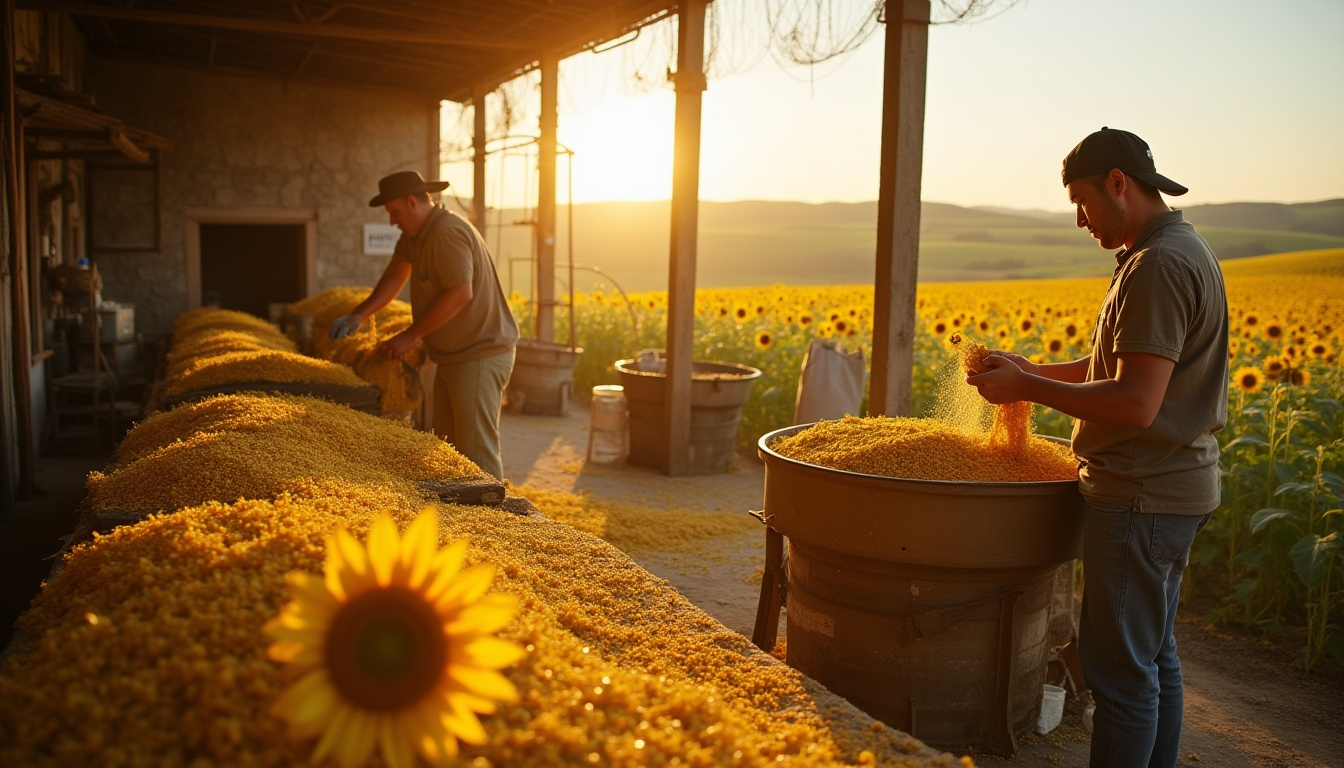The battle against piracy has long challenged maritime security forces, especially in...
How Sunflower Oil Is Made: From Billions of Sunflowers to Your Kitchen
The sunflower oil production process is a fascinating journey from vibrant fields to kitchen shelves, transforming billions of pounds of sunflowers into a versatile, nutrient-rich oil. In the United States, sunflower oil is a staple in households and industries, valued for its light taste, high vitamin E content, and heart-healthy properties. This article explores the intricate steps involved in producing sunflower oil at an industrial scale, highlighting the efficiency of modern factories and the agricultural prowess behind harvesting vast quantities of sunflowers.

Sunflower oil production begins with the harvest. In 2023, North Dakota led U.S. sunflower production with over 1.1 billion pounds, followed by South Dakota at 817.2 million pounds. Sunflowers are grown primarily for their oil-rich seeds, with the U.S. producing about 381 million pounds of sunflower oil in 2022. The process starts with farmers cultivating oil-type sunflower seeds, which contain 38-50% oil, ideal for extraction. These seeds are harvested using advanced machinery, ensuring minimal loss and maximum yield during the June-to-September growing season.
Once harvested, the seeds are transported to processing facilities, with major plants located in North Dakota and Colorado. The first step in the factory is seed preparation. Seeds undergo thorough cleaning to remove debris, dirt, and metallic impurities using magnets and screening equipment. Next, dehulling removes the tough outer hulls, which are often repurposed as an energy source for the plant or used in livestock feed. Dehulled seeds, or "meats," are flaked and cooked to rupture cell walls, making oil extraction easier.

The extraction process is where the magic happens. Factories employ two primary methods: hard pressing or prepress solvent extraction. Hard pressing uses high-pressure expeller presses to squeeze out approximately 25% of the oil, while prepress solvent extraction, the more common method, extracts over 40% by combining mechanical pressing with solvents like hexane. In prepress solvent extraction, seeds are pressed to release most of the oil, and the remaining oil-rich cake is treated with solvents to maximize yield. The solvent is later evaporated and reused, ensuring efficiency and sustainability.
After extraction, the crude sunflower oil undergoes refining to enhance its quality. This involves degumming to remove phospholipids, neutralization to eliminate free fatty acids, bleaching to improve color, and deodorizing to ensure a neutral taste. The result is a pale-yellow oil rich in linoleic acid, oleic acid, and vitamin E, ideal for cooking, frying, and even cosmetic applications. Advanced techniques, like cold-pressing, preserve more nutrients but are less common in large-scale production due to lower yields.

The byproducts of sunflower oil production are equally valuable. The leftover meal, high in protein (28-41%), is used in livestock feed, while hulls serve as an energy source or animal bedding. In 2022, the U.S. consumed 335,000 metric tons of sunflower oil, a fraction compared to soybean oil but significant for its niche in health-conscious markets.
Globally, sunflower oil accounts for 9% of vegetable oil production, with the U.S. playing a modest but growing role compared to giants like Ukraine and Russia. The industry’s future looks bright, with the global sunflower oil market projected to grow from $24.72 billion in 2025 to $37.74 billion by 2032, driven by demand for healthier oils. Innovations like pulsed electric field (PEF) technology are boosting yields and maintaining oil quality, making sunflower oil production a dynamic and evolving field.
By blending advanced technology with sustainable practices, U.S. factories transform billions of pounds of sunflowers into a golden oil that nourishes both people and industries, solidifying its place in the global market.
Don't miss those
KC-46 Pegasus: Fueling the Future of...
The Boeing KC-46 Pegasus has taken flight as the U.S. Air Force’s...
Microsoft’s Majorana 1 Pioneering the Future...
In a groundbreaking advancement, Microsoft has unveiled Majorana 1, the world’s first...
Real-Life Superhuman Moments Captured on Camera
In a world where challenges often seem overwhelming, glimpses of real-life heroes...
Billion Tons of Sugarcane: The Art...
Sugarcane, a towering tropical grass, is the backbone of global sugar production,...
U.S. Navy Pioneers Aerial Refueling Drone...
On August 23, 2025, the United States Navy marked a historic milestone...







